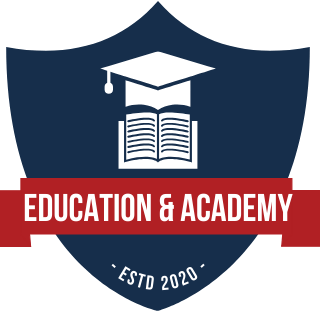Table of Contents
- Introduction
- 1. Enhancing Accessibility
- 2. Promoting Collaboration
- 3. Supporting Diverse Learning Styles
- 4. Reducing Educational Costs
- 5. Fostering Lifelong Learning
- 6. Facilitating Customization
- 7. Encouraging Innovation
- 8. Improving Educational Quality
- 9. Empowering Educators
- 10. Expanding Global Reach
- Conclusion
- FAQs
Introduction
In the digital age, education is undergoing a significant transformation, and Open Educational Resources (OER) are at the forefront of this change. OER offers free, accessible, and high-quality educational materials that can be used, modified, and shared by anyone, anywhere. As we dive into 2024 and beyond, let’s explore ten ways OER is reshaping learning and its implications in the educational landscape.
1. Enhancing Accessibility
One of the most significant advantages of OER is its ability to make learning materials accessible to everyone. With the rise of the internet and digital technologies, students from various backgrounds can access quality educational resources without financial barriers.
- Examples: Websites like OER Commons and OpenStax provide a plethora of free textbooks and resources.
- Impact: This accessibility ensures that students in underfunded schools or remote areas can access the same quality of education as their peers in more affluent regions.
2. Promoting Collaboration
OER fosters a collaborative learning environment among students, educators, and institutions.
- Features: Many OER platforms allow users to share feedback, suggest edits, and contribute additional resources.
- Example: Platforms like MERLOT encourage peer review and collective development of resources, which enhances learning through shared knowledge.
3. Supporting Diverse Learning Styles
Every learner has a unique style of processing information. OER caters to this diversity by offering materials in various formats, such as videos, podcasts, and interactive simulations.
- Visual Learners: Infographics and video tutorials help visual learners grasp complex concepts.
- Auditory Learners: Podcasts and audiobooks cater to those who learn best through listening.
- Kinesthetic Learners: Interactive simulations provide hands-on experience.
4. Reducing Educational Costs
The rising cost of education is a pressing issue for many students. OER significantly reduces these costs by providing free access to learning materials.
- Statistics: A study by the Institute for Higher Education Policy found that students saved an average of $120 per course when institutions adopted OER.
- Impact: This financial relief allows students to allocate their resources toward other essential needs, such as housing or food.
5. Fostering Lifelong Learning
The flexibility of OER encourages learners of all ages to pursue knowledge at their own pace, thus promoting lifelong learning.
- Examples: Platforms like edX and Coursera offer OER courses on various subjects that can be taken anytime, empowering individuals to learn continuously.
6. Facilitating Customization
OER allows educators to tailor content according to the specific needs of their students.
- Examples: Teachers can remix OER materials to create personalized learning experiences, aligning resources with their curriculum and students’ learning needs.
- Impact: This customization leads to more engaging and relevant educational experiences.
7. Encouraging Innovation
The open nature of OER encourages innovation in teaching and learning practices. Educators are motivated to experiment with new methods and technologies.
- Example: The use of gamification in OER has led to increased student engagement and motivation.
- Impact: This innovation ultimately enhances the effectiveness of educational practices.
8. Improving Educational Quality
The collaborative nature of OER leads to higher quality educational resources through peer review and continuous improvement.
- Example: Many OER platforms implement rigorous quality checks, ensuring that resources meet pedagogical standards.
- Impact: This focus on quality ensures that students receive the best possible education.
9. Empowering Educators
OER empowers educators by providing them with the tools and resources they need to enhance their teaching practices.
- Examples: Teachers can access a wealth of materials, share best practices with peers, and contribute to the development of new resources.
- Impact: This empowerment leads to more effective teaching strategies and improved student outcomes.
10. Expanding Global Reach
OER breaks down geographical barriers, allowing students and educators around the world to connect and collaborate.
- Example: Initiatives like the UNESCO OER Initiative promote international cooperation and knowledge sharing.
- Impact: This global reach fosters a sense of community and shared learning experiences across cultures.
Conclusion
As we move further into 2024, the role of Open Educational Resources in transforming learning continues to expand. From enhancing accessibility to promoting collaboration and innovation, OER is reshaping the educational landscape for the better. Embracing OER not only benefits students and educators but also contributes to a more equitable and inclusive educational system.
FAQs
Q1: What are Open Educational Resources (OER)?
A1: Open Educational Resources are teaching, learning, and research materials that are available in the public domain or released under an intellectual property license that permits their free use and repurposing.
Q2: How can I find quality OER?
A2: Websites like OER Commons, OpenStax, and MERLOT are excellent starting points to find high-quality OER across various subjects.
Q3: Are OER only available for higher education?
A3: No, OER are available for all educational levels, including K-12, vocational training, and lifelong learning resources.
Q4: Can educators create their own OER?
A4: Absolutely! Educators are encouraged to create, modify, and share their resources, contributing to the OER community.
For more insights on the impact of technology in education, check out the resources available at Edutopia.
By embracing Open Educational Resources, we can foster a more inclusive, innovative, and effective educational environment that meets the needs of all learners.



